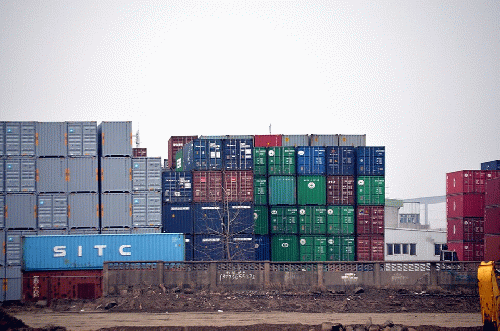Donald Trump has long championed tariffs as a cure for America's economic woes, a stance he's doubled down on as he eyes another term in 2025. He frames these taxes on imported goods as a shield for American industries, a way to claw back jobs from overseas and stick it to countries that undercut U.S. workers. It's a straightforward pitch that resonates with his base. But a chorus of critics-- economists, policy wonks, and everyday Americans-- see his tariff obsession as a flawed, even dangerous idea that could do more harm than good. Their arguments paint a picture of unintended consequences, and they've got plenty of alternative ideas for what Trump should be doing instead.
The pushback starts with a basic reality: tariffs aren't free. They're taxes on imports, and foreign companies don't just eat the cost-- they pass it on. American consumers end up paying more for everything from cars to kitchen appliances. Back in Trump's first term, his tariffs on steel, aluminum, and Chinese goods tacked an estimated $419 onto the average household's yearly expenses, according to the Federal Reserve Bank of New York. With talk of even steeper tariffs this time around-- sometimes floated as a 20% blanket on all imports-- critics warn of an inflation surge that could hit the working class hardest, the very people Trump says he's fighting for.
Then there's the domino effect. When the U.S. slaps tariffs on other countries, those nations hit back. During Trump's trade war with China, Beijing targeted American soybeans, leaving farmers reeling and forcing taxpayers to foot the bill for billions in bailout subsidies. It wasn't a one-off-- Canada and the EU retaliated too, hammering U.S. exports like whiskey and motorcycles. Broader tariffs could trigger an even nastier cycle of tit-for-tat, choking industries that rely on selling abroad. Critics call it a self-inflicted wound, one that subsidies can't sustainably patch up.
Supply chains take a beating too. Today's economy is a global web-- think of a "Made in America" car with steel from Canada, circuits from Japan, and parts from Mexico. Tariffs hike the price of those pieces, making the final product less competitive. Rebuilding those industries at home sounds noble, but critics argue it's not that simple. Companies can't just flip a switch-- domestic capacity takes years, not to mention a workforce that's often unprepared. The result? Higher costs, slower growth, and a hit to America's edge.
Jobs are another sticking point. Trump sells tariffs as a ticket to manufacturing's glory days, but the numbers tell a murkier story. A National Bureau of Economic Research study from 2019 found that while tariffs on Chinese goods propped up some steel jobs, the broader fallout-- higher costs, slashed demand-- wiped out far more positions in retail and other sectors. The net loss? Around 175,000 jobs. Bigger tariffs would amplify that damage, rippling through small businesses and service industries that don't get the headlines but keep the economy humming.
Beyond dollars and cents, there's a diplomatic cost. Tariffs on allies like Canada and the EU during Trump's first term frayed ties at a time when the U.S. needs partners to counter China's rise. This is shortsighted-- why alienate friends when you could team up to set the rules of global trade? Going it alone with tariffs, they argue, risks isolating America, handing rivals a free pass to fill the void.
So what's the alternative? I've got a playbook for Trump to consider. Instead of taxing imports, I'd rather see him pour money into America's future-- think infrastructure upgrades, green tech breakthroughs, and training programs to get workers ready for modern jobs. It's about building strength from within, not punishing outsiders, and avoiding the price hikes and trade wars tariffs bring.
I also suggest getting surgical with trade policy. Forget blanket tariffs-- go after specific cheats, like China's intellectual property theft or subsidized industries flooding markets with cheap goods. Enforcement could pack a punch without dragging allies into the crossfire or jacking up grocery bills. Speaking of allies, rejoining or rethinking deals like the Trans-Pacific Partnership could unite friendly nations to squeeze out bad actors like China, all without a single tariff.
On the home front, tax breaks and grants could lure companies to build factories stateside, cutting red tape to make it happen fast. Imagine Apple assembling iPhones in Ohio instead of Shenzhen-- same goal as tariffs, less collateral damage. And looking long-term, Trump's missing the real job-killer: automation. I'd rather see him push STEM education, vocational training, and tech adoption for small businesses, tackling the future head-on instead of fighting yesterday's battles.
I don't dispute the problems he's targeting-- job losses, trade imbalances, China's edge. I just think tariffs are a clumsy, outdated fix that's more likely to backfire than deliver. Higher prices, retaliation, broken supply chains, and lost jobs outweigh the wins, they say, and the data backs them up. The alternatives-- investment, precision, alliances-- aim for the same goals with less pain. Whether Trump buys into that vision is anyone's guess. His track record leans toward the tariff hammer, not the scalpel of reform. But for those sounding the alarm, the stakes are too high to keep swinging the same old way.





